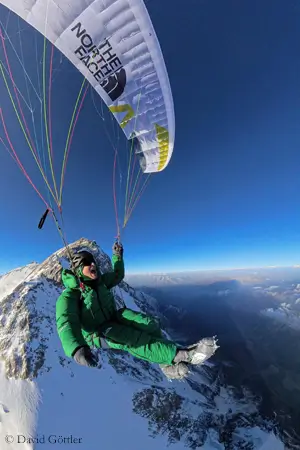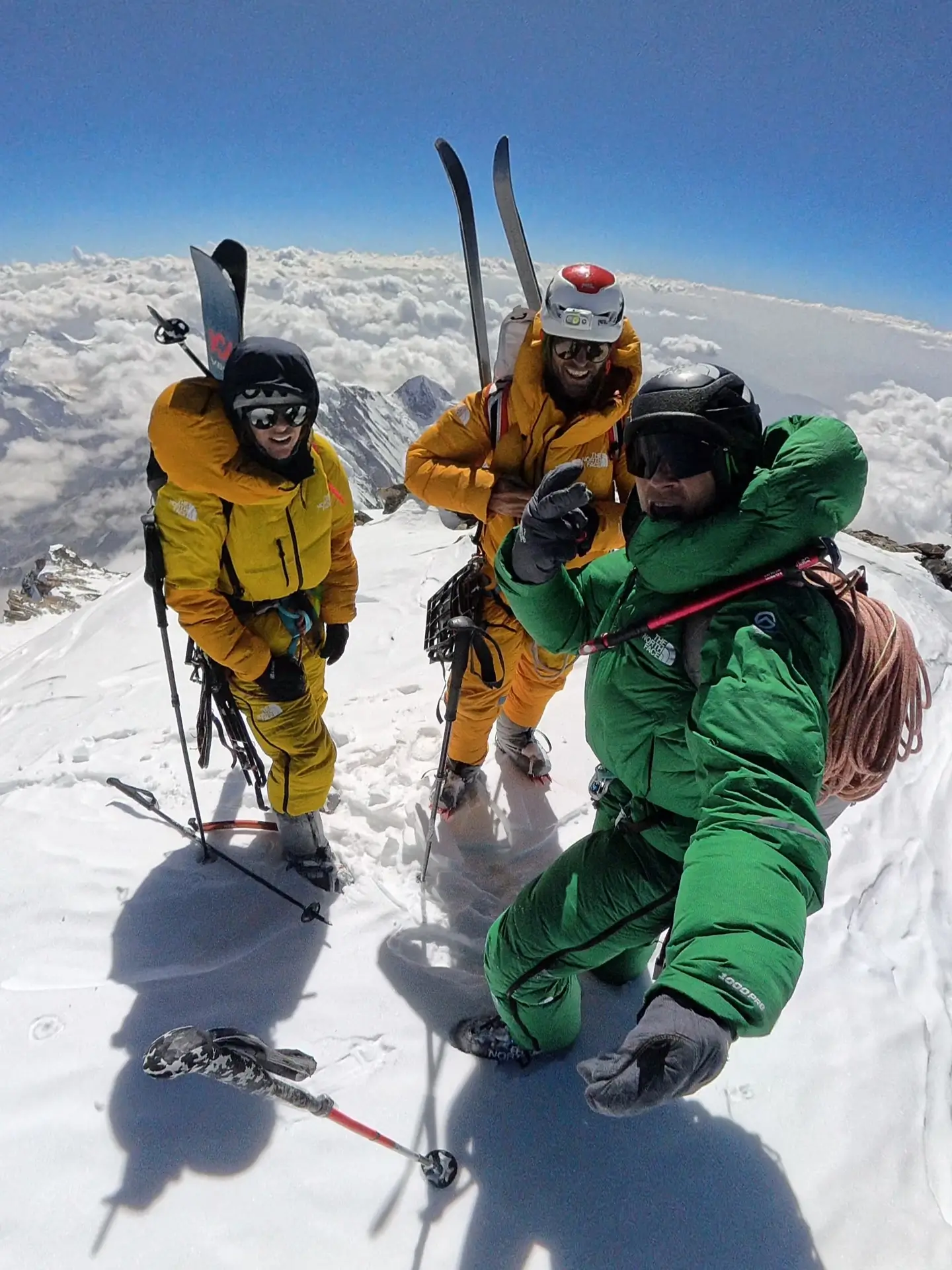Nanga Parbat: Goettler’s Bold Alpine-Style Triumph
When German alpinist David Goettler reached the summit of Nanga Parbat this summer, he wasn’t just standing on top of one of the world’s most dangerous peaks – he was fulfilling a dream decades in the making. With French teammates Tiphaine Duperier and Boris Langenstein, Goettler climbed alpine style via the massive Rupal Face and descended the same day by air – flying off the mountain at 7700 meters. It was, in his words, “a very special summit” – and possibly the most meaningful of his career.
Table of contents
A Lifetime in the Mountains
Years in the Making
Light, Fast, and Pure
Climb & Fly
The Power of Team
A Summit That Stays With You
A Lifetime in the Mountains
David Goettler is no stranger to high altitudes and bold objectives. A professional alpinist and mountain guide, he has been climbing for over two decades and is known for his fast, oxygen-free ascents on 8000-meter peaks. His resume includes climbs on Everest, Makalu, Dhaulagiri, Lhotse, and Shishapangma – all without supplemental oxygen. In 2022, he gained international attention after turning back just 50 meters from the summit of Everest due to unsafe conditions, staying true to his commitment to climb in good style over chasing headlines.
Goettler’s climbing philosophy is centered on purity, speed, and minimalism – choosing lightweight ascents over the heavily supported style of many commercial expeditions. Nanga Parbat was one of the final great challenges that remained unfinished for him, both technically and emotionally.
Years in the Making
“When reaching the summit I felt such a big relief and joy,” Goettler told Summiters Club in an exclusive interview. “It was almost surreal after all these years to finally make it to the top.” Having read about Nanga Parbat as a child, Goettler had attempted the mountain multiple times, dating back to a 2013 winter expedition with Simone Moro. The mountain’s allure, and the complexity of the Schell Route on the Rupal Face, kept calling him back.
“I really liked it and started to develop more and more insight into this route, which kept me trying again and again,” he said. The route’s relative safety from seracs and crevasses, as well as its crossing from the Rupal to the Diamir Face, added to its appeal.
Light, Fast, and Pure
This climb was more than just a summit. It was Goettler’s long-held dream to complete an 8000-meter ascent without oxygen, commercial support, or fixed ropes – in pure alpine style.
“To do it on such a big face and complex route was just phenomenal,” he said. “It proved that alpinism is still possible on 8000-meter peaks.”

While the lower part of the mountain was dry and dangerous due to rockfall, conditions higher up were excellent – some of the best Goettler has seen. With a good weather window, the team climbed swiftly and strategically. This year’s Pakistan climbing season was unusually dry and warm, especially in June, increasing rockfall hazards in the lower sections up to 6000 meters. But higher up, the Schell Route offered pristine conditions. The team fixed ropes only up to Camp 2 and completed the rest without any pre-placed gear, showcasing an extraordinary commitment to self-sufficiency.
Climb & Fly
What made this ascent even more unique was how it ended. Tiphaine and Boris skied much of the descent down the Schell Route, navigating rock sections with abseils. Goettler, however, had his eye on the air. Though the wind on the summit was too gusty to launch, he descended to 7700 meters and then took off, paragliding back to base camp in a magical 30-minute flight.
“This was always part of the vision,” he said. “Climb and fly – and we made it happen.”
This flight was not only a breathtaking finale but a reminder of how far modern alpinism has evolved – blending vertical precision with aerial freedom.
The Power of Team
Goettler credits much of the expedition’s success to his teammates. “This was one of the best teams I’ve ever climbed with,” he shared. “Despite being very different characters, we worked perfectly together. If one was feeling low, the others carried more. That team spirit made the summit possible.”
Tiphaine Duperier and Boris Langenstein are also experienced high-altitude skiers and climbers. Their synergy with Goettler was key in tackling the technical demands of the Rupal Face and the shared descent.
A Summit That Stays With You
In the days since, the emotions have lingered. “Sometimes I feel I need to pinch myself to make sure I’m not dreaming,” he said. “It’s hard to put in words.”
And while he’s still processing the weight of this success, Goettler already knows it won’t be his last.
“Of course I have many more challenges and dreams in my mind… so for sure it won’t be long until I start to plan the next trip.”
For the mountaineering world, David Goettler’s Nanga Parbat ascent – part precision, part persistence, and part poetry – will remain a powerful reminder that style, patience, and vision still shape the summits that matter most.

